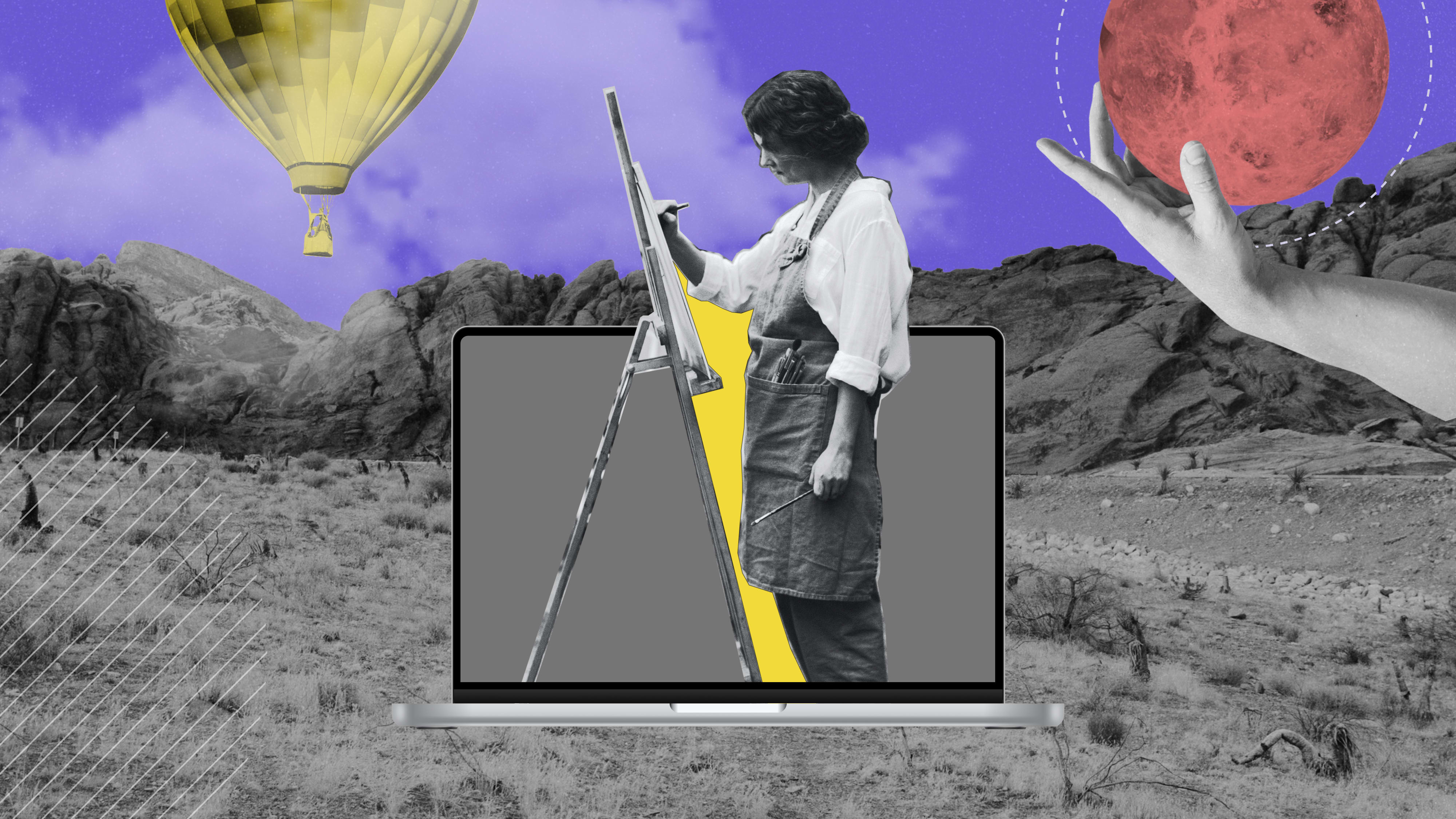How to Establish a Strong Visual Identity for your Website
As a business, do you want people to recognize you, know you, remember you? Of course you do. And one of the most effective ways to achieve this is through the visual identity of your website, the foundation of your online presence. A strong visual identity can set you apart from the competition and that’s what you want from your website. This article looks at the elements of how to create a strong online visual identity, and how to find the right partner to help you do so.

Table of contents
What is visual identity?
Visual identity – sometimes referred to as part of your overall brand identity – is what people see when they interact with your brand. Unsurprisingly, it includes all the visual elements of how you represent your business and products: the logo, color palette, images and illustrations, animations, typography, icons, photography, all the esthetics. Visual identity is the outward, exterior appearance of your brand and business.
Why is visual identity important?
Your business’s visual identity tells people who you are, differentiating you from competitors on the market. Humans are a very visual species – most people engage with the world on a primarily visual level. First impressions are always important and your website is often the first serious contact people have with your visual identity and you. They might find you first on social media but apart from the profile and banner pics on your account, the visuals belong to the specific social media platform. Your website is usually the first place people get to see the ‘real you’.
How to create a visual identity in your website design
Visual identity is part of your branding, so, first you need to be clear on your brand. You need to establish what makes your business unique on the market, what your core values are, and how that fits and meets the needs of your target audience and clients. When you know who you are, working on the following list of visual identity elements is much easier.
- Color palette – Different colors have different impacts, psychologically and emotionally; blue is tranquil but often cold, yellow is warm and sunny but can be seen as unstable, red is passionate but can be a danger sign, and so on. Bright colors can be exciting, muted colors are calmer, more serious. Your choices can be harmonious or they can clash – it depends on the message you want your visual identity to embody.
- Logo – Your logo will be just about everywhere you are, not only on your website but your social media accounts, your email banner, your products, everywhere. It might be a name, a symbol or icon – it should be unique, work at a variety of sizes, and be clearly recognizable in either color or monochrome.
Fonts – What typeface will you use for your website text and content? How about the titles and headings? Broad categories of font include:
- Serif – often seen as classic or formal
- Sans-serif – often seen as more modern (possibly even tech-savvy)
- Script – more like calligraphy, elegant
- Handwritten – as it sounds, these have a more casual, individual flavor
- Decorative/Display – unique, often elaborate letter shapes
Usually, text utilizes either serif or sans-serif fonts; the others may be chosen for details such as headings or call-to-action buttons.
For an example of different ways to use a font, check out this Boldare collaboration celebrating Akzidenz-Grotesk.
- Images – The cliché is true, a picture is worth a thousand words. Do you want pictures of your business or workplace? Or evocative landscapes? Or fun, action-oriented imagery? Then there is the question of what kind of image: do you use photos, videos, hand-drawn images, silhouettes, collages… Images create atmosphere and the options are almost endless but, as always, your choices should fit with the brand and overall visual identity you want to convey to the market.
These are the basic elements of how to create a visual identity. Once chosen, you apply them to your website design according to a few basic principles to ensure a consistent impression:
- Repetition – repeating elements results in unity and consistency; you can also deliberately ‘break’ that consistency to achieve a specific impact.
- Contrast – uniformity can be boring and unmemorable; judicious use of contrast can emphasize certain elements in your visual identity and design.
- Hierarchy – just like in an article, the title, section headings and subheadings have a hierarchy that clearly tells the reader the relative importance of each section of text, so a hierarchy of design elements can be used to direct the website visitor’s attention.
- Balance – again, how you place different elements on a webpage can create an impression – uniformity? tension? – depending on the level of symmetry. The issue of balance also leads into your website’s layout and the important practical question of making it easy and intuitive to navigate.
Coherent and consistent (though not necessarily coordinated - for example, if clashing colors are part of the chosen look) choices of all these elements make up your website’s visual identity and can help establish you as a unique business or organization.
Finally, an important point about accessibility. Before you get too ‘wild’ with your visual identity choices, consider how to ensure your website is accessible to the widest possible range of visitors. This may include ensuring your color palette is clear to people with a visual impairment or just tired eyes after a day of screen time; likewise consider the size and readability of your font choices or providing subtitles for videos and alt text to images.
For a more detailed dive into accessible design and Web Content Accessibility Guidelines, check out our article “How can accessible design for digital products improve your business?”
A case study – Chartipedia
For an example of a Boldare collaboration balancing colors, fonts and imagery to create a welcoming yet professional website, check out the work we did on Chartipedia’s MVP.
Finding the right website design partner
Maybe you have all the right skills and experience in-house to develop the perfect visual identity and apply it to your website – if not, you’re looking to partner with the right external expertise. You might be looking for a lone design freelancer or a software dev company, depending on whether you just need help with creating a visual identity or implementing that design on your website. The question is, how to decide on the right partner?
You need a website design partner who understands your business, your clients, your brand, etc. and can take that understanding and create a visual identity that feels like you.
First, you look for potential partners with a strong track record in your budget range (though be warned: budget and price are never the key factors to finding the right partner). Then, check out their past work, looking for references from their previous partners/clients and other evidence. A good place to check out is Clutch.co, which rates profiles on experience, awards, reviews, market presence and ability to deliver. The Awwwards.com site is another source, this time focused on digital design, including visual identity, where assessments are based on talent, design, UX/UI, creativity, and content.
Next, dig deeper into who they are and how they operate as a partner. Consider the following factors:
- Experience – How established are they? Who have they worked with? How stable is their business (i.e. will they still be around longer term to support you?)
- The team – Who exactly will be working on your website? What is their experience? Will they be dedicated to your website or juggling multiple projects? Will you even know/meet the individuals involved or will you just be dealing with ‘the company’ (a potential red flag). What else do they bring to the table? As an example, check out Boldare’s design services page with a strong commitment to process, an Agile mindset, experience, open minds, and customer satisfaction.
- Communication – How will you interact with the person/people designing your website? What tools will you use (email? Slack? Jira? carrier pigeon?!) How prompt are communications and responses? How transparent will communication be? Will you be dealing directly with the designer(s) or will there be a manager or other gatekeeper?
- Culture – How compatible is the potential partner’s business culture with your own? Do their values fit with yours? They don’t have to be identical – working across national boundaries in a globalized world means differences are often inevitable – but they do need to be at least complementary.
- Tools - Does your potential partner use industry standard design and development tools? At Boldare, we find Figma to be a tried and trusted collaborative design tool when working to create a visual identity. But the cutting edge is also where it’s at - we’re also enthusiastically testing AI design tools (so far, the conclusion is that they can be incredibly helpful but won’t replace an experienced expert anytime soon).
How to create a visual identity for your website
We operate in an increasingly visual world and designing a strong visual and brand identity for your website is a critical challenge for any business. The basic elements of visual identity – colors, logo, fonts and imagery – interact to create an overall impression that can decide how visitors (and potential clients) explore your website, or decide not to. Often it is necessary to engage external support and skills in establishing a website’s visual identity and that’s where the challenge becomes finding the right partner for your specific business and brand needs.

Share this article:






